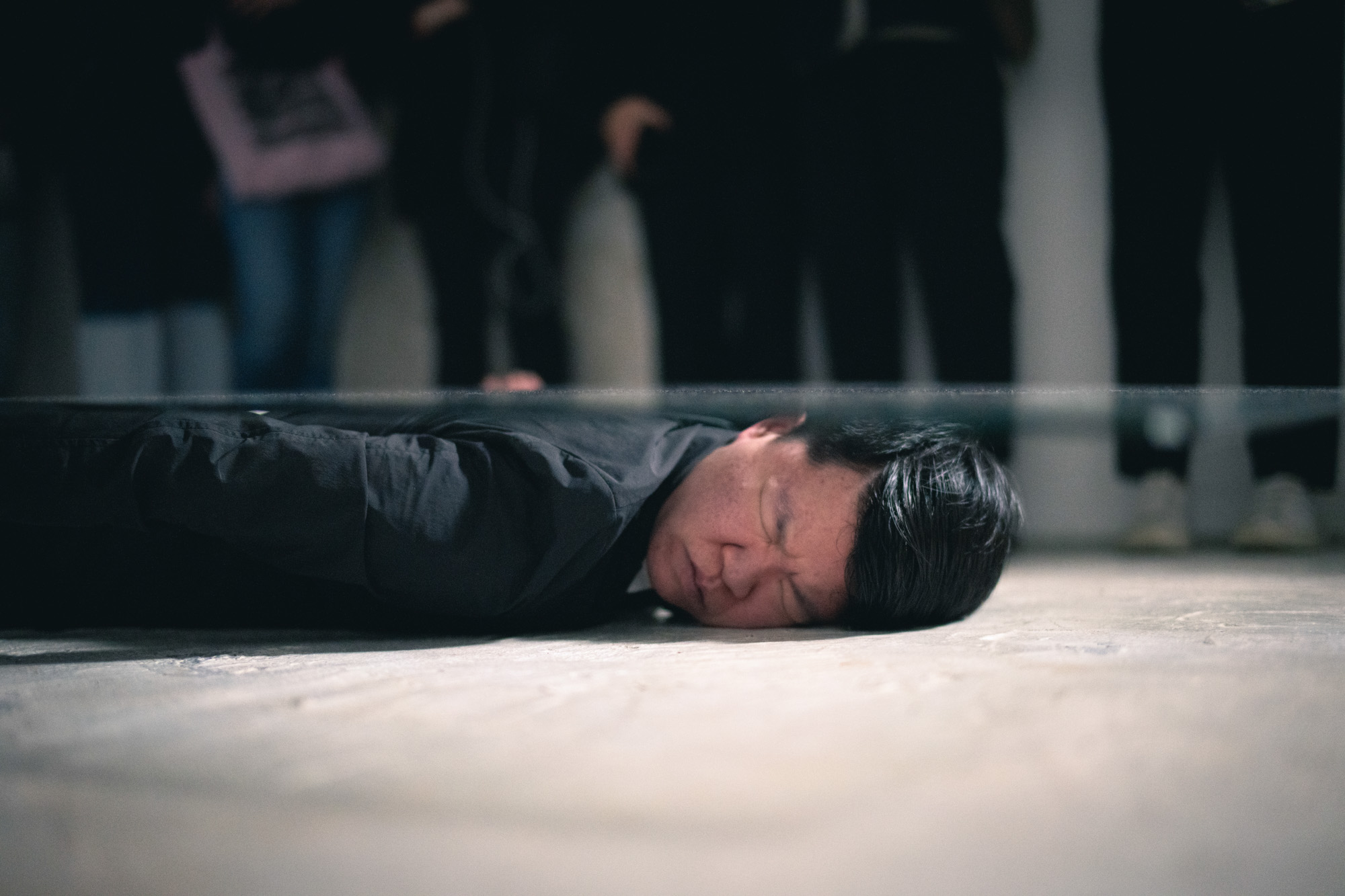Up Close: Monique Yim
By Nicole M. Nepomuceno
Full text also available in Chinese.

MONIQUE YIM, Queer Series No. 16, 2021, documentation of performance at Per.Platform 2021, Hong Kong: 30 min. Photos by Gustav Lindgren. Courtesy the artist.
In a cramped, dark room, a white spotlight flicked on. There laid Monique Yim, back pressed onto the floor, laboring under the weight of a rectangular glass sheet larger than her body.
What do we do when we see others struggle? We watch. Yim twisted, swiveled, and turned, contorting herself in an attempt to escape from underneath the glass without shattering it. I watched. She grunted and gripped onto the edges of the sheet. I watched. Trial and error; the possibility of release taunting . . . taunting . . . taunting, until—a misstep—the glass prevailed. Such is the queer experience: a continuous wrestle with barriers invisible to many.

MONIQUE YIM, Queer Series No. 16, 2021, documentation of performance at Per.Platform 2021, Hong Kong: 30 min. Photos by Tam Wai Man. Courtesy the artist.
Swiftly casting the sheet aside was not an option: there wasn’t enough space. Yim rolled onto her stomach, a new method. She was sweating, breathing heavily from exhaustion. What do you feel when you see someone struggle? Helpless, complicit. We breathed air thick with discomfort. Should I help her? I wondered whether intervention is welcome in this performance; I decided against it.
And then—cameras. One, two, three, four photographers swarmed Yim. Click, click, click, click. After all, what is performance art without documentation? An unreliable memory, like this text. Yim’s cheek pressed against cement: a close-up. She balances the sheet on her spine: a hero shot. The images accompanying these words likely describe the event better than I. But at the time, the sight before me tasted like irony, and I thought about how much of culture capitalizes on queer pain.
After half an hour, by inching her body slowly, Yim emerged from under the glass. She softly placed the sheet flat onto the floor, her fingerprints visible on its surface. She bowed, we applauded. These struggles that were once invisible—what do we do now that we see them?
.jpg)







